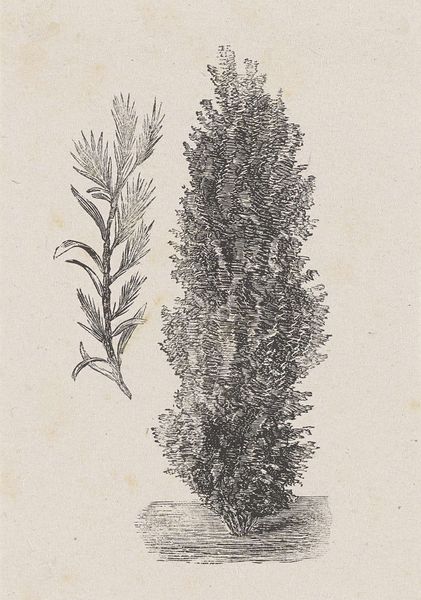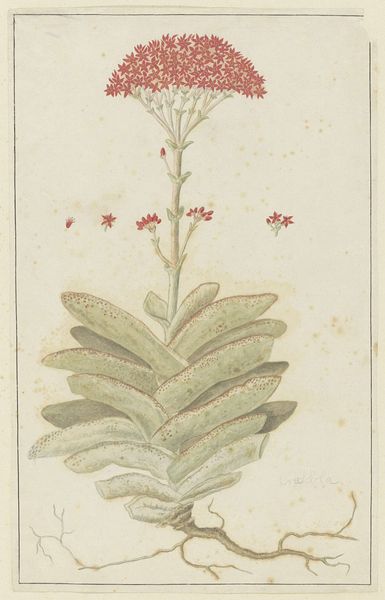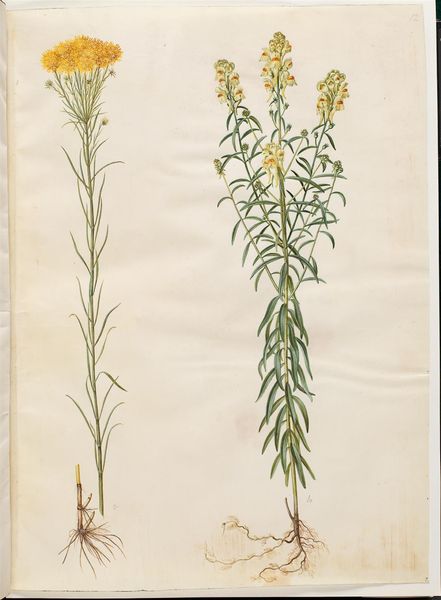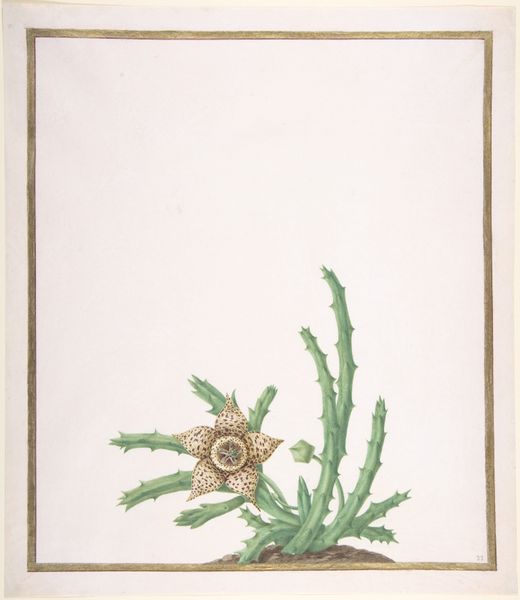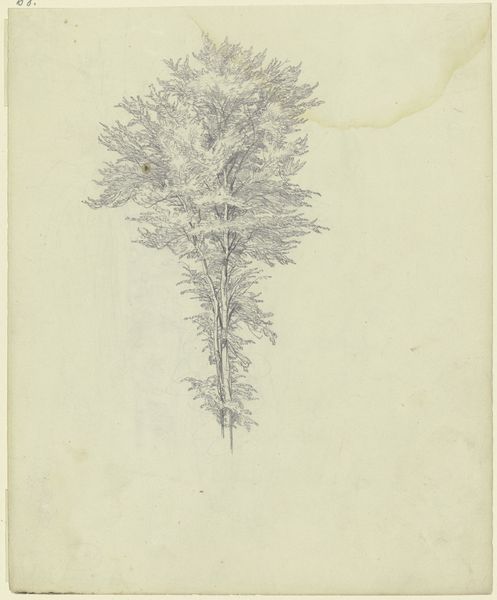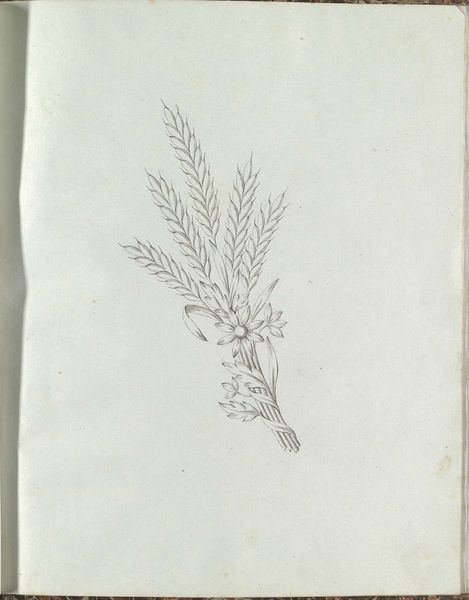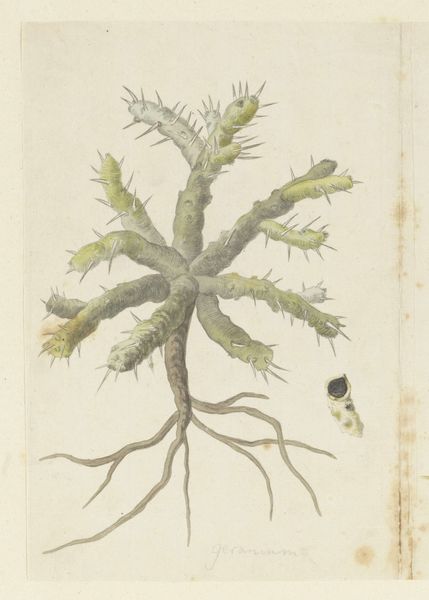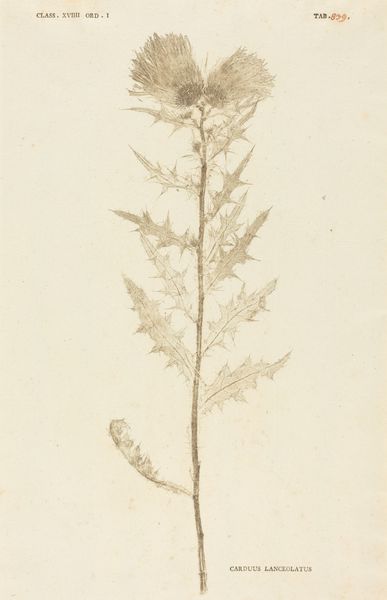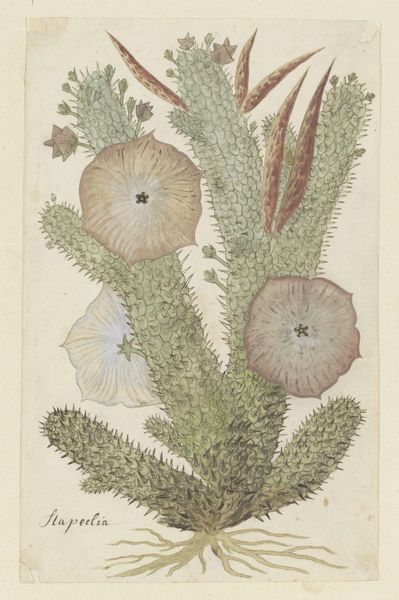
Paranomus sceptrum-gustavianum (Sparrm.) Hylander (King Gustav’s sceptre) Possibly 1777 - 1786
0:00
0:00
painting, watercolor
#
painting
#
watercolor
#
botanical art
#
watercolor
#
realism
Dimensions: height 660 mm, width 480 mm, height 540 mm, width 364 mm, height mm, width mm
Copyright: Rijks Museum: Open Domain
Robert Jacob Gordon made this watercolor on paper of the Paranomus sceptrum-gustavianum, or King Gustav’s sceptre. The name is interesting, isn't it? Gordon was a Dutch explorer, soldier, and naturalist of Scottish descent, and his work reflects the intersection of natural history and colonial power. Made in the late 18th century, this image embodies the Enlightenment's drive to classify and catalogue the natural world. But it also highlights the role of botanical illustration in asserting European dominance over newly “discovered” lands like South Africa, where this plant is native. The plant's regal name connects it to Swedish royalty, suggesting the ways in which natural specimens were used to bolster national pride and project political power. To understand this image fully, we might turn to colonial archives, botanical records, and even royal genealogies. The meaning of art is always contingent on social and institutional context.
Comments
No comments
Be the first to comment and join the conversation on the ultimate creative platform.
